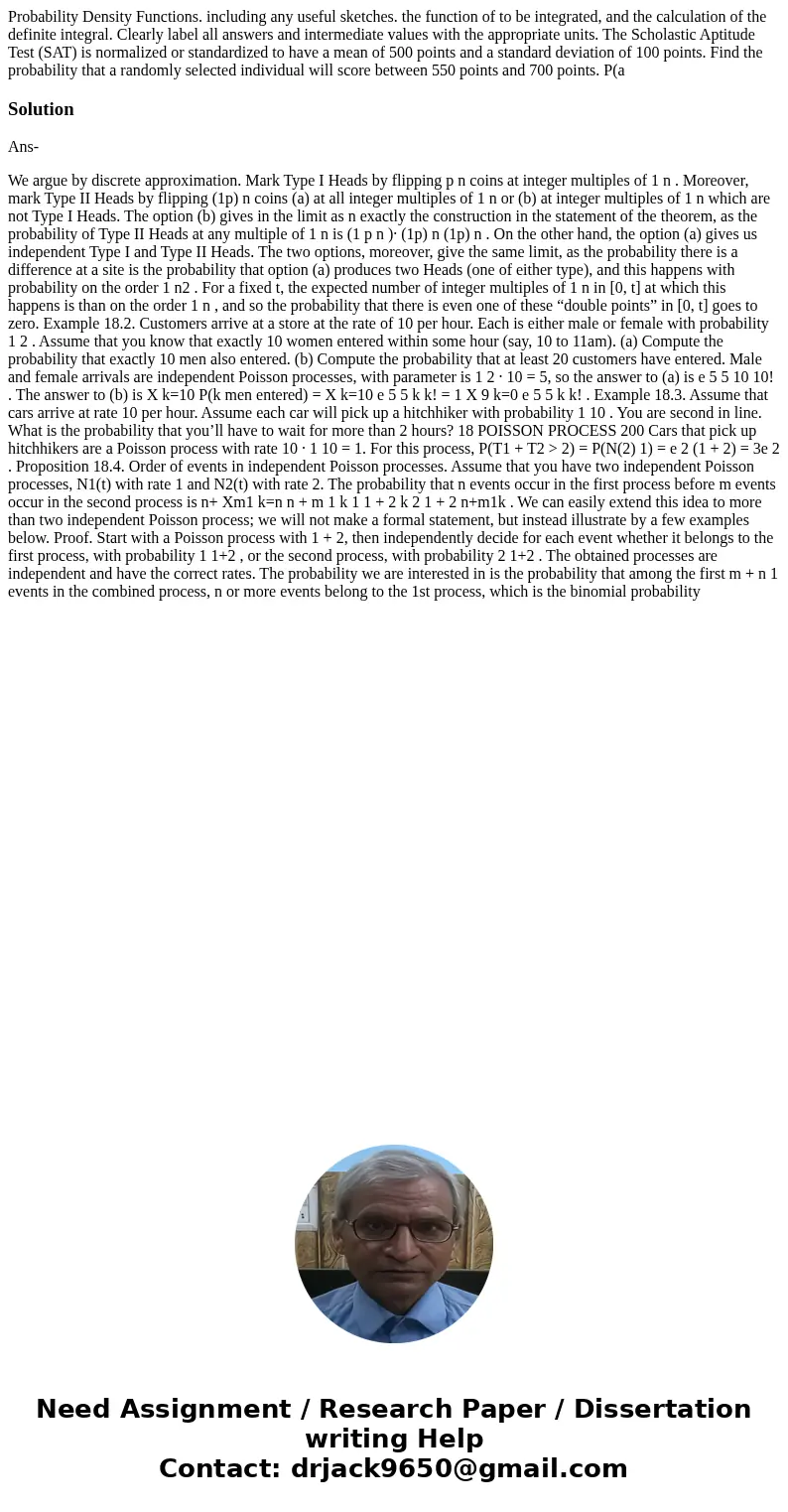Probability Density Functions including any useful sketches
Solution
Ans-
We argue by discrete approximation. Mark Type I Heads by flipping p n coins at integer multiples of 1 n . Moreover, mark Type II Heads by flipping (1p) n coins (a) at all integer multiples of 1 n or (b) at integer multiples of 1 n which are not Type I Heads. The option (b) gives in the limit as n exactly the construction in the statement of the theorem, as the probability of Type II Heads at any multiple of 1 n is (1 p n )· (1p) n (1p) n . On the other hand, the option (a) gives us independent Type I and Type II Heads. The two options, moreover, give the same limit, as the probability there is a difference at a site is the probability that option (a) produces two Heads (one of either type), and this happens with probability on the order 1 n2 . For a fixed t, the expected number of integer multiples of 1 n in [0, t] at which this happens is than on the order 1 n , and so the probability that there is even one of these “double points” in [0, t] goes to zero. Example 18.2. Customers arrive at a store at the rate of 10 per hour. Each is either male or female with probability 1 2 . Assume that you know that exactly 10 women entered within some hour (say, 10 to 11am). (a) Compute the probability that exactly 10 men also entered. (b) Compute the probability that at least 20 customers have entered. Male and female arrivals are independent Poisson processes, with parameter is 1 2 · 10 = 5, so the answer to (a) is e 5 5 10 10! . The answer to (b) is X k=10 P(k men entered) = X k=10 e 5 5 k k! = 1 X 9 k=0 e 5 5 k k! . Example 18.3. Assume that cars arrive at rate 10 per hour. Assume each car will pick up a hitchhiker with probability 1 10 . You are second in line. What is the probability that you’ll have to wait for more than 2 hours? 18 POISSON PROCESS 200 Cars that pick up hitchhikers are a Poisson process with rate 10 · 1 10 = 1. For this process, P(T1 + T2 > 2) = P(N(2) 1) = e 2 (1 + 2) = 3e 2 . Proposition 18.4. Order of events in independent Poisson processes. Assume that you have two independent Poisson processes, N1(t) with rate 1 and N2(t) with rate 2. The probability that n events occur in the first process before m events occur in the second process is n+ Xm1 k=n n + m 1 k 1 1 + 2 k 2 1 + 2 n+m1k . We can easily extend this idea to more than two independent Poisson process; we will not make a formal statement, but instead illustrate by a few examples below. Proof. Start with a Poisson process with 1 + 2, then independently decide for each event whether it belongs to the first process, with probability 1 1+2 , or the second process, with probability 2 1+2 . The obtained processes are independent and have the correct rates. The probability we are interested in is the probability that among the first m + n 1 events in the combined process, n or more events belong to the 1st process, which is the binomial probability

 Homework Sourse
Homework Sourse